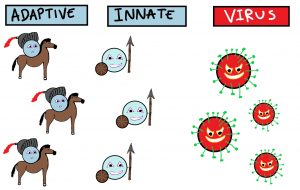How do vaccines work?
By Tahmid Kabir
The fight against infections is one of the fiercest wars within the history of humanity, and is still on-going today. In this war, humanity has discovered many tools to help us fight. One such example, is the use of vaccinations, which has made huge contributions in the improvement of global health.
How do vaccines work?
The basic principles of vaccines involve using the natural mechanisms of the immune system to make the body immune to a disease. It is quite a clever process, but for us to understand, we first need to cover some basic immunological concepts.
Essentially, the immune system labels cells as either “self” or “non-self”; this means any cell which is foreign to the body, such as bacteria, will be a destroyed by the body. This recognition-based system works by screening for proteins called antigens, which are found on the surface of cells and are different for all cells.
Once foreign antigens are detected, the immune system launches an attack, this can be classified into two subtypes. Firstly, we have the innate immune system which mainly works towards fighting and removing pathogens – this system consists of cells such as phagocytes, which literally engulf germs and kill them interiorly by digestion.
Then we have the adaptive immune system, and this is more specific – cells called B-lymphocytes produce proteins called antibodies. These are specific to the antigen of the pathogen and act as drones, highlighting pathogens and labelling them for destruction. There are also T-lymphocytes, which attack the germs directly and produce cytokines, which are chemicals that essentially orchestrate the immune response – essentially, cytokines are messenger molecules, and recruit the different types of white blood cells in the areas of where the infection is, and assist in the destruction of the white blood cells in a controlled way. As the adaptive immune response is much more specific, it takes longer to become active compared to the innate immune system.
After the pathogens are destroyed, their immune system still has some more jobs to do. Cells called memory cells are made, and these essentially circulate in your body, and “remember” the antigen of the pathogen that attacked your body. This means, that if the same pathogen enters your body again, your memory cells will recognise the antigen and immediately start an immune response, killing the germs before you even feel any symptoms – clever!
 Vaccines use this very principle of memory cells – each injection introduces an inactive or dead form of the antigen for a specific pathogen. These are recognised by the immune system as “non-self” and thus produce an immune response leading to the production of memory cells. At times, multiple injections are required, also known as “boosters”, to ensure that full immunity is acquired.
Vaccines use this very principle of memory cells – each injection introduces an inactive or dead form of the antigen for a specific pathogen. These are recognised by the immune system as “non-self” and thus produce an immune response leading to the production of memory cells. At times, multiple injections are required, also known as “boosters”, to ensure that full immunity is acquired.
But, is there a risk of getting ill if I get vaccinated?
As with any medical procedure, there is always a risk and the same goes for vaccination. Nonetheless, the risk is very small, with a chance of one in a million or so to suffer from an adverse reaction, and this risk is easily outweighed by the benefits. Horrible diseases such as smallpox have been completely eradicated due to vaccinations.
However, there is a small proportion of the population, who cannot get vaccinated because of reasons such as allergies or being immunosuppressed. Therefore, it is very important that people who can be vaccinated for a disease such as the MMR (mumps, measles and rubella), get vaccinated. This is because of the concept of herd immunity, which means that if enough of a population becomes immune to a disease, then those who are not immune, will be less likely to get that disease due to decreased spread.
